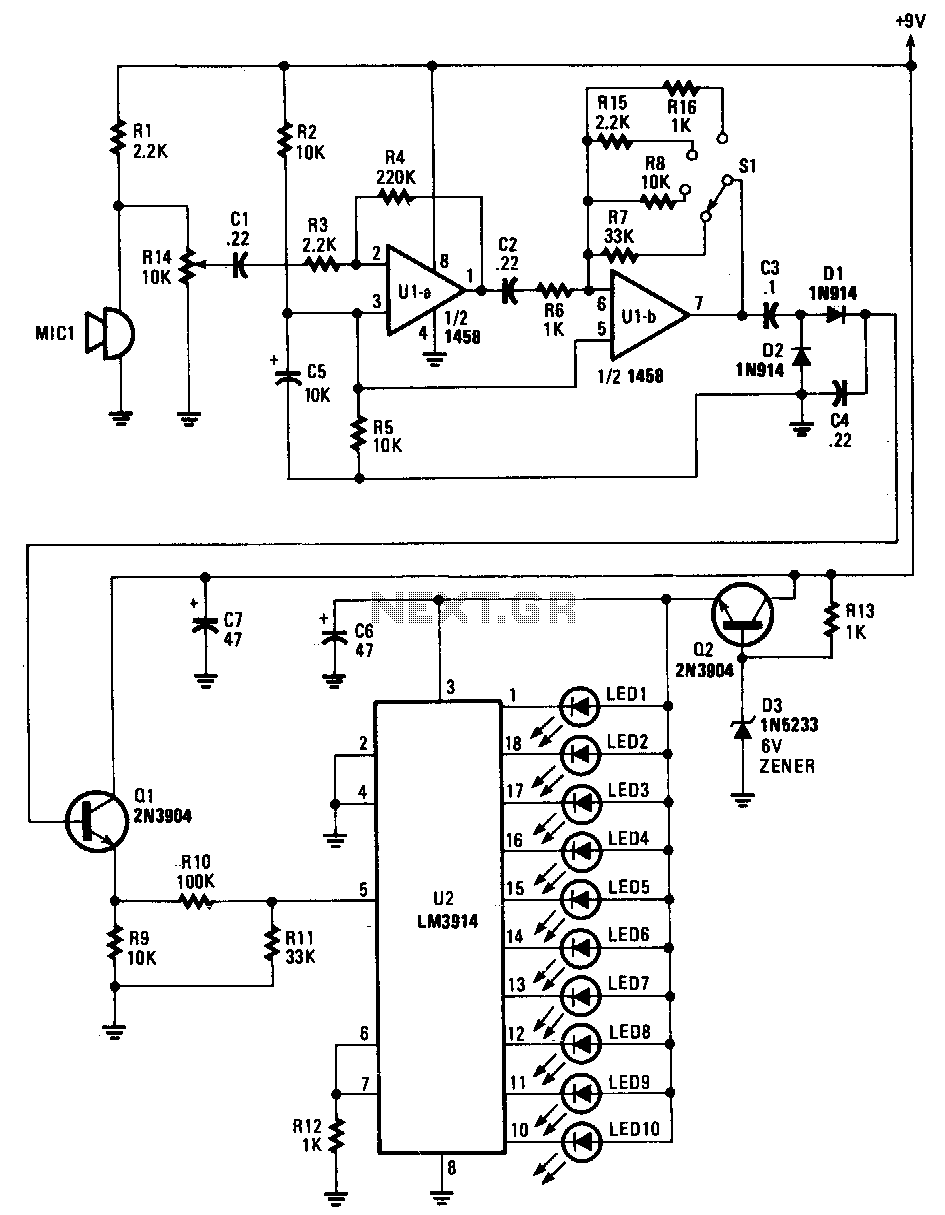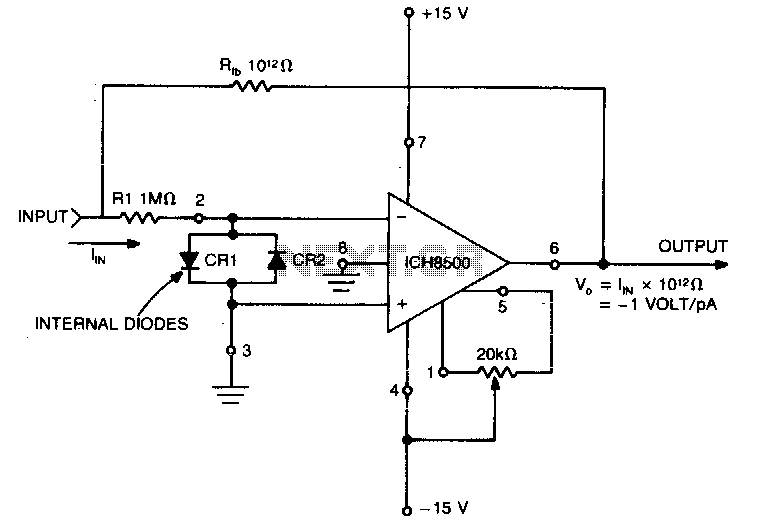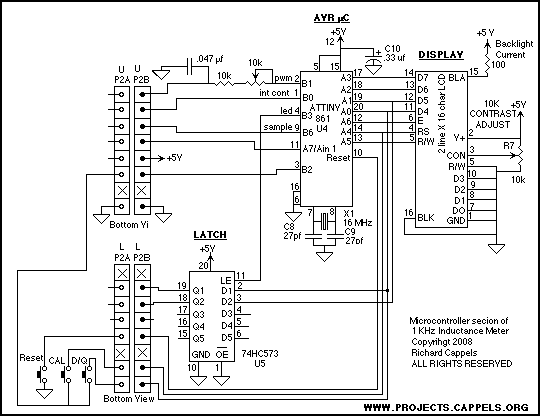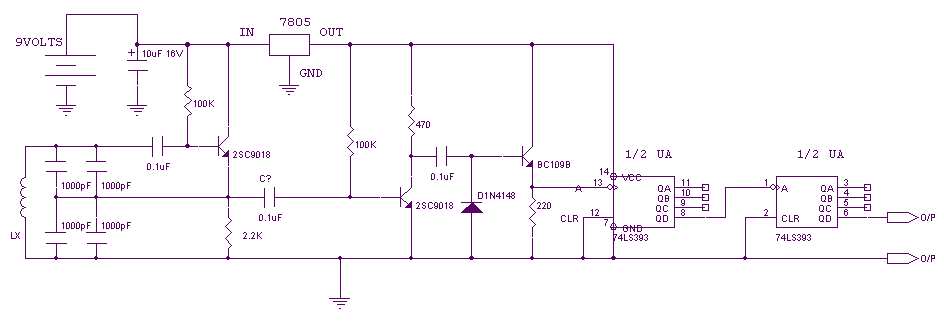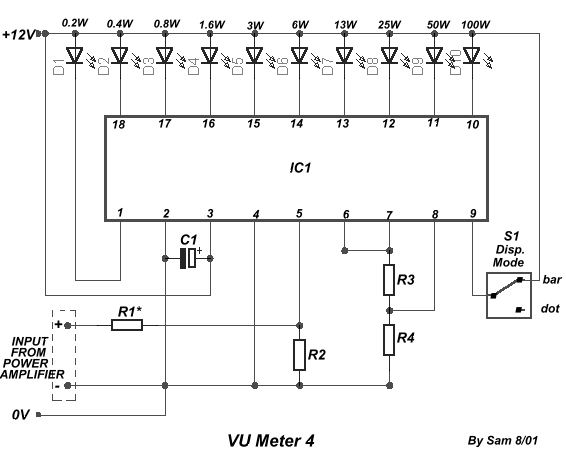
vu meter em84
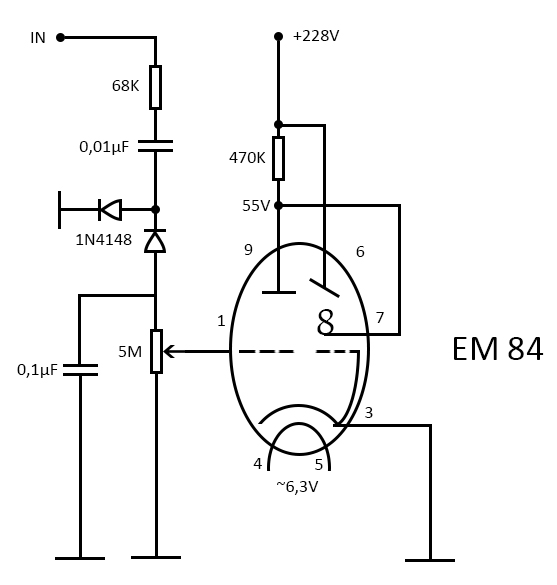
Among all existing tubes, the most captivating are the indicator tubes, which were invented in the 1930s. Their greenish shimmering light led to the term "Magic Eye." Magic Eye tubes are essentially small CRT derivatives, often incorporating a built-in triode for amplification. The EM84 model, which is inexpensive and readily available, particularly on platforms like eBay, has been in use for some time. In the context of building a complete tube stereo amplifier, utilizing Magic Eye tubes as VU meters is a logical choice. Although the EM84 is not a true Magic Eye, being more accurately described as a "magic stripe," it still serves the intended purpose. There are also experiments underway with a preamp stage using a BC171 transistor, although a MOSFET would be a better option for high input impedance. Nonetheless, the intention is to maintain a fully tube-based design, leaning towards the use of a triode.
The Magic Eye indicator tubes, specifically the EM84, serve as a unique visual component in audio equipment, providing a captivating display that responds to audio levels. The EM84 operates by utilizing a phosphorescent screen that glows when a voltage is applied, creating a visual representation of the audio signal. In this application, the EM84 can be integrated into the amplifier circuit to function as a VU meter, allowing for real-time monitoring of audio output levels.
The incorporation of a triode amplifier stage is essential for driving the EM84, as it provides the necessary gain and ensures that the tube operates within its optimal range. The triode's characteristics, such as its high gain and linearity, make it a suitable choice for this application. The design should consider the input signal's characteristics to ensure compatibility with the triode's requirements.
In terms of circuit design, the preamp stage featuring the BC171 transistor can be designed to interface with the triode, allowing for a seamless transition between solid-state and tube amplification. While a MOSFET could provide higher input impedance, the use of a BC171 aligns with the objective of maintaining a tube-centric approach. The circuit should include biasing resistors for the triode, coupling capacitors to block DC while allowing AC signals to pass, and appropriate power supply considerations to ensure stable operation.
Overall, the integration of the EM84 as a VU meter within a tube amplifier circuit reflects a blend of vintage aesthetics and modern audio engineering, creating a visually appealing and functional component that enhances the user experience.From all the existing tubes, for sure the most interesting ones are the indicator tubes. From the 1930 ²s when they were invented, they captivated the eyes with the greenish shimmering light, thus the Magic Eye term appeared. The magic eye tubes are just small CRT derivations, usually they also have a triode built-in, as an amplifier.
I had two EM84 laying around for some time ( EM84 are cheap and easy to find, mostly on eBay ), and as I was planning to start an all tube stereo amplifier, it made perfect sense to use magic eye tubes as vu-meters, although EM84 can hardly be called a magic eye, it is more a magic stripe . I am also experimenting with a preamp stage with a BC171 transistor ( a MOSFET would be a better choice for high input impedance ), but I think that in order to keep it all tube I will try with a triode.
🔗 External reference
The Magic Eye indicator tubes, specifically the EM84, serve as a unique visual component in audio equipment, providing a captivating display that responds to audio levels. The EM84 operates by utilizing a phosphorescent screen that glows when a voltage is applied, creating a visual representation of the audio signal. In this application, the EM84 can be integrated into the amplifier circuit to function as a VU meter, allowing for real-time monitoring of audio output levels.
The incorporation of a triode amplifier stage is essential for driving the EM84, as it provides the necessary gain and ensures that the tube operates within its optimal range. The triode's characteristics, such as its high gain and linearity, make it a suitable choice for this application. The design should consider the input signal's characteristics to ensure compatibility with the triode's requirements.
In terms of circuit design, the preamp stage featuring the BC171 transistor can be designed to interface with the triode, allowing for a seamless transition between solid-state and tube amplification. While a MOSFET could provide higher input impedance, the use of a BC171 aligns with the objective of maintaining a tube-centric approach. The circuit should include biasing resistors for the triode, coupling capacitors to block DC while allowing AC signals to pass, and appropriate power supply considerations to ensure stable operation.
Overall, the integration of the EM84 as a VU meter within a tube amplifier circuit reflects a blend of vintage aesthetics and modern audio engineering, creating a visually appealing and functional component that enhances the user experience.From all the existing tubes, for sure the most interesting ones are the indicator tubes. From the 1930 ²s when they were invented, they captivated the eyes with the greenish shimmering light, thus the Magic Eye term appeared. The magic eye tubes are just small CRT derivations, usually they also have a triode built-in, as an amplifier.
I had two EM84 laying around for some time ( EM84 are cheap and easy to find, mostly on eBay ), and as I was planning to start an all tube stereo amplifier, it made perfect sense to use magic eye tubes as vu-meters, although EM84 can hardly be called a magic eye, it is more a magic stripe . I am also experimenting with a preamp stage with a BC171 transistor ( a MOSFET would be a better choice for high input impedance ), but I think that in order to keep it all tube I will try with a triode.
🔗 External reference
